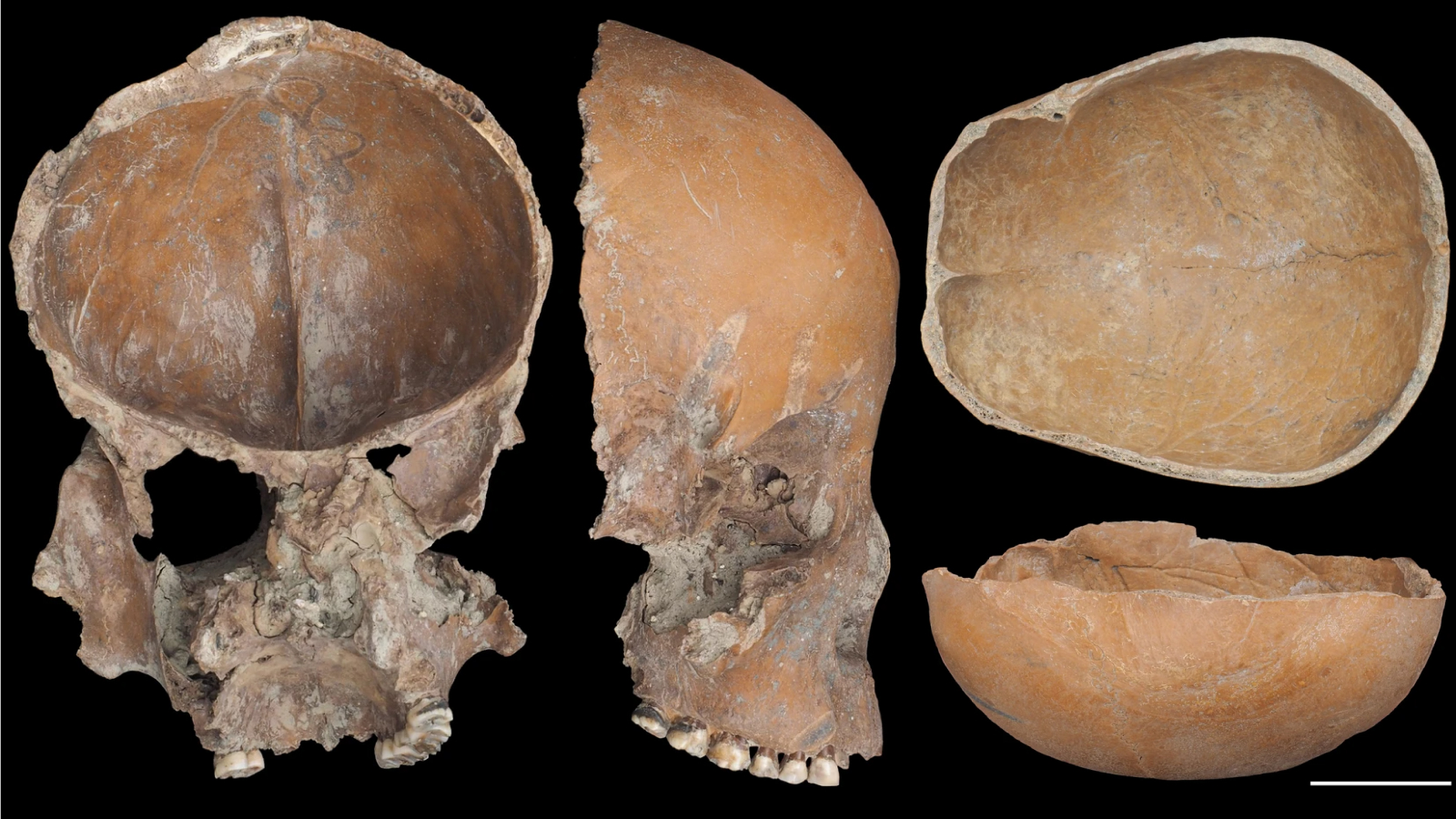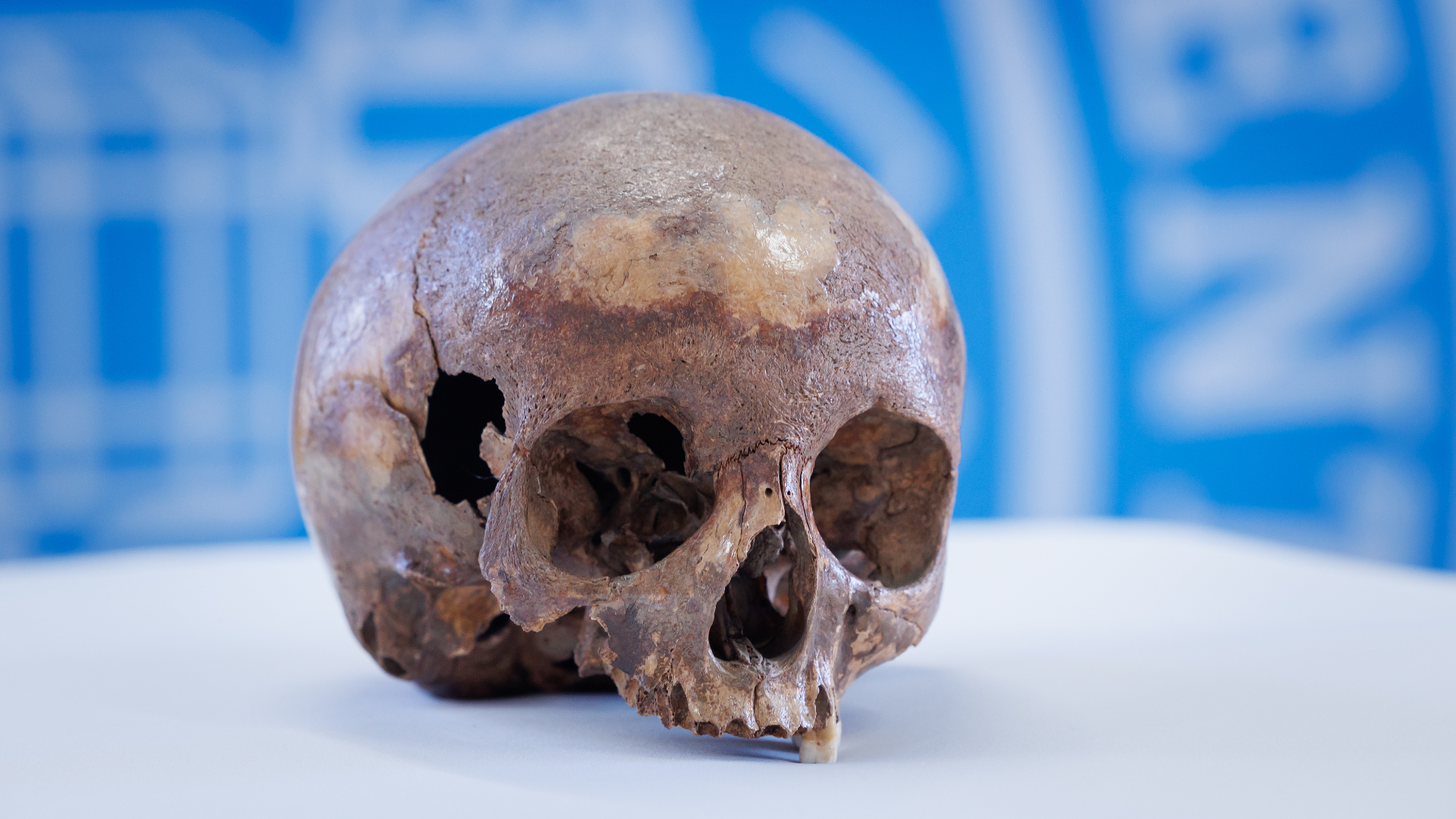The discovery began the way many archaeological stories do — with silence. Buried beneath centuries of dust and desert wind lay the skull of an Anasazi woman, preserved just enough to carry traces of a world long gone. Though only one fragment of a larger history, it offered a rare, intimate look into the daily life, struggles, and resilience of the people who lived in the American Southwest over a thousand years ago.
The remains date back to the Pueblo I Period (750–900 AD), an era when the Ancestral Puebloans — often referred to in older archaeological literature as the “Anasazi,” or “Ancient Ones” — were undergoing remarkable transformation. From shifting lifestyles to emerging agricultural practices, they were building the cultural foundations that would one day shape the identities of modern Pueblo communities.
The Pueblo I World: Villages Rising From the Desert

The Pueblo I Period marked the dawn of stability for the ancient Southwest. Communities began moving away from mobile, scattered encampments, choosing instead to build permanent settlements in the high desert regions of present-day Arizona, New Mexico, Colorado, and Utah.
Rows of stone-and-adobe dwellings started appearing on mesas and canyon edges — small villages where families cooked, crafted tools, tended crops, and gathered for ceremonies. Life became more rooted, and with that stability came new possibilities: stronger community bonds, shared labor, and the beginnings of a more complex social structure.
Agriculture: Opportunity and Burden
At the heart of this shift was the rise of agriculture.
Maize became more than a crop — it was a cornerstone of survival. Corn, beans, and squash formed what archaeologists now call the “Three Sisters,” providing balanced nutrition and supporting larger populations. But farming in the arid Southwest required determination:
-
irrigation ditches carved by hand,
-
soil prepared with simple tools,
-
constant vigilance against drought.
Agriculture brought security, but also hardship, as every harvest carried the weight of an entire community’s survival.
What Bones Remember: Health, Diet, and Daily Life

The skull of the Anasazi woman revealed these realities in physical form. Microscopic analysis showed pronounced dental wear, a common sign of maize-based diets. Because corn was often ground on stone slabs, tiny mineral particles mixed into the flour — over time creating natural abrasives that slowly wore down teeth.
Her skull also showed subtle indicators of physical stress, consistent with a life full of labor-intensive routines:
-
hauling water from distant sources,
-
grinding grain daily,
-
constructing walls and hearths,
-
and enduring the harsh cycles of seasonal scarcity.
These clues remind us that ancient life was not just about survival, but endurance — a daily negotiation with the land.
A Culture Written in Stone, Clay, and Bone

One of the most compelling elements of Ancestral Puebloan culture was the practice of cranial modification. The gentle shaping of an infant’s skull, done for cultural or social reasons, served as a marker of identity rather than harm. The woman’s skull reflected this tradition, hinting at the values and symbolic practices woven into her community’s world.
Alongside such physical indicators, archaeologists have uncovered:
-
intricately carved petroglyphs,
-
pottery decorated with geometric patterns,
-
ceremonial structures known as kivas,
-
and trade goods from distant regions.
Together, these artifacts paint a picture of a society that was spiritually rich, creative, and deeply connected to its landscape.
A Link Between Past and Present
Though only one individual, the Anasazi woman embodies a pivotal moment in history — a time when communities were experimenting with new lifestyles, refining agricultural techniques, and expanding their social networks. The period that followed would give rise to the iconic cliff dwellings at Mesa Verde and extensive trade routes that connected cultures across the Southwest.
Modern Pueblo peoples — including the Hopi, Zuni, and many others — carry forward the cultural legacy of these ancient communities. For them, archaeology is not just a study of the past, but part of a living continuum.
Echoes Across Time

The skull of this Anasazi woman is more than an artifact; it is a quiet storyteller. Through it, we glimpse:
-
the challenges her community faced,
-
the labor that sustained them,
-
the traditions that shaped their identities,
-
and the resilience that allowed their culture to thrive for centuries.
Archaeology often works in fragments — a bone here, a tool there — yet each discovery forms a bridge between modern observers and lives lived long before ours. This woman, separated from our world by more than a millennium, becomes a reminder of something profoundly human:
Across time, landscapes, and cultures, people strive for the same things — survival, community, meaning, and continuity.
Her story, preserved in silence and rediscovered in the earth, whispers back to us through the centuries, inviting us to look closer, listen deeper, and honor the endurance of those who came before.
